Spain Vacation Guide
Planning a trip to Spain? Awesome! This Spain Vacation guide shows you where to go, how to get there, what to eat there and much much more. Check it out.
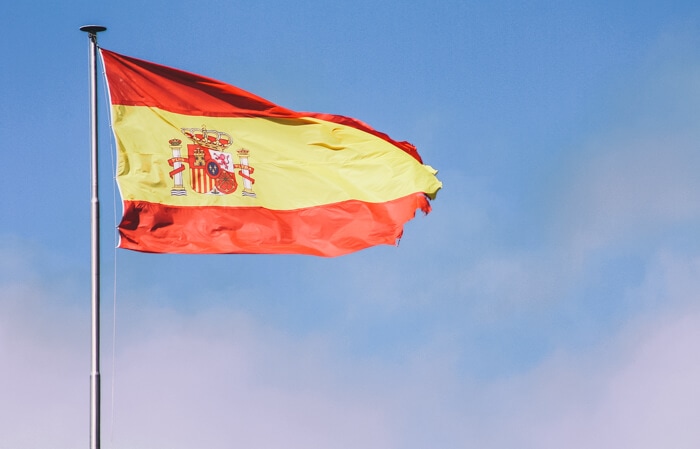
Spain country is divided up into 16 autonomous regions, each with their own character and identity. The country is best known for its delicious food (think tapas and paella), traditional dancing and music such as flamenco, and hundreds of years of art and culture. It’s hardly surprising that so many tourists visit! The Spain Vacation Guide holds all the information you need to plan your own trip to Spain.
Spain is located on the Iberian Peninsula, which it shares with Portugal and Andorra, in southwestern Europe. In 2018, it became the world’s 2nd most visited country by tourists, moving ahead of the USA. Only France receives more visitors annually.
Spain is Europe’s 4th biggest country. It has been a member state of the EU since 1986, and of NATO since 1992.
Spain Vacation Guide: quick facts
Size: 504,645 km² or 195,364 sq mi
People living there: more than 46,700,000
Capital: Madrid
Governmental structure: Constitutional Monarchy
National day: October 12
Time zone: Central European Time / UTC+1 / GMT+1 for mainland Spain, Western European Tome / UTC / GMT for the Canary Islands
Currency: euro (EUR)
Power voltage and socket type(s): 230V, plug types F and C. If these plug types don’t match your devices, make sure to bring a universal adapter
Official religion(s)/Freedom of religion: Freedom of religion. 2/3 of the population is Roman Catholic, followed by atheist and agnostic citizens, and mostly other Christians.
Official language(s) and general knowledge of English: Spanish is the official language, followed by regional languages like Catalan, and Basque. English is semi-widely spoken.
Drives on this side: right
International driver’s licence accepted? yes
Phone code: +34
Vaccinations needed? None
Can you drink the tap water? yes, so make sure to bring a reusable water bottle
Provinces of Spain
1. Andalusia
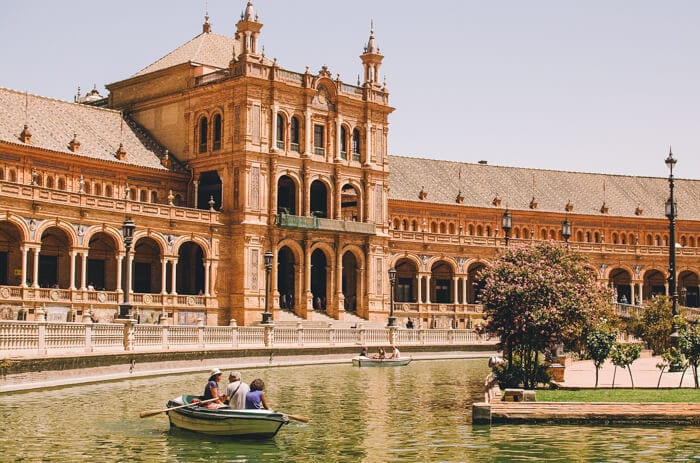
Andalusia is the second largest province in Spain and is one of the most popular tourist destinations in the country. Its rich culture has had many different influences over the years, from Jewish to Arabic. One of the best examples of Moorish architecture can be found near Granada – the Alhambra Palace. As well as vibrant, exciting, and historical cities like Malaga, Córdoba, and the capital Seville, Andalusia has a lot to offer in terms of nature.
There’s the volcanic Tabernas Desert, great beaches on the coast for sunbathing and swimming, and excellent hiking in the region’s hills and mountains. Although it almost touches Africa, you can ski in the Sierra Nevada mountain range too.
2. Aragon
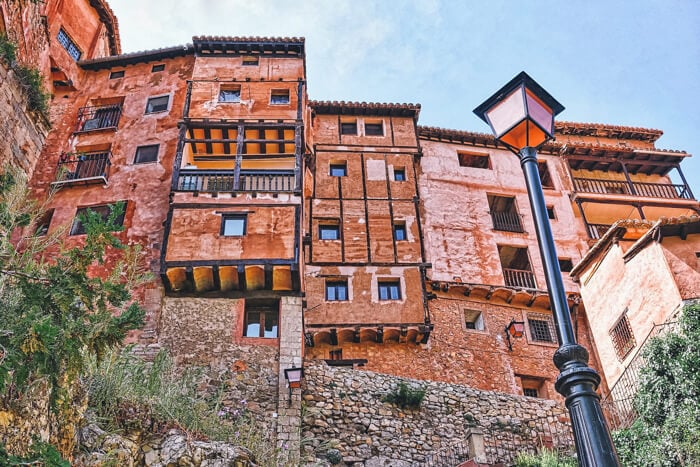
A large landlocked state in the northeast of Spain, Aragon consists of the provinces of Zaragoza, Huesca, and Teruel. Although not as renowned as in Andalusia, there are excellent examples of Múdejar (Moorish) architecture, as well as a number of monasteries and castles. For art lovers, this region was the birthplace of one of the great Spanish artists, Francisco de Goya.
Away from art and culture, Aragon is an excellent spot for natural attractions. In the north, you’ll find the Pyrenees where you can ski in winter and try a whole host of other activities during the summer. There’s also the Ordesa y Monte Perdido national park, a spectacular spot for adventure sports and relaxing alike. The region is also famed for its excellent gastronomy and wine.
3. Asturias
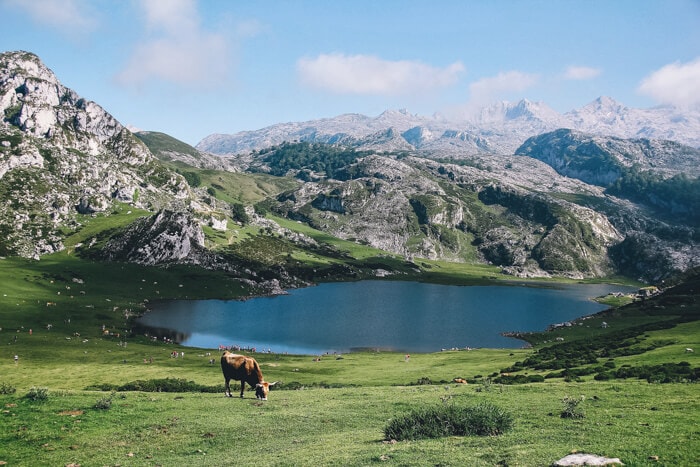
The principality of Asturias is on the north coast of Spain and is famed for its natural beauty. Home to protected landscapes, national parks, and the best-conserved coastline in Spain, it’s a paradise for those who want to get closer to nature. Along the coast, there are 18 picturesque fishing villages where you can immerse yourself in the traditions of Asturian culture, as well as the huge port city of Gijón.
Step back in time and discover the cave paintings in Cangas de Onis, otherwise known as the cradle of Spain, or perhaps even further at the Jurassic museum near Llastres. The food and drink traditions of Asturias are also worth exploring – try traditional flat cider poured expertly poured from above at an odd angle, the warming winter stew of fabada, or share an enormous cachopo with about 4 friends.
4. Cantabria
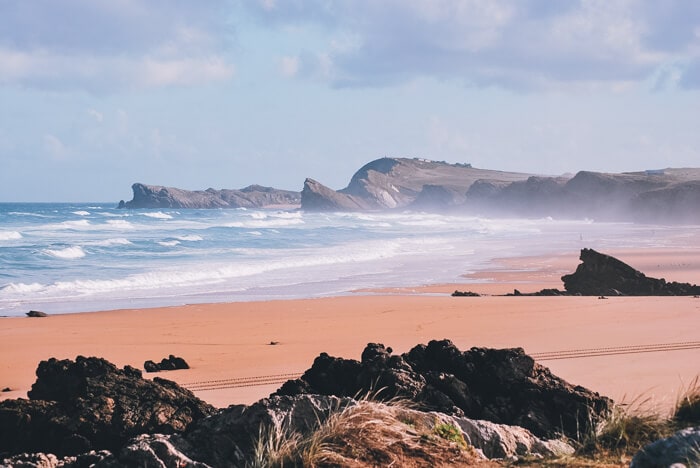
Cantabria is on the north coast of Spain and sits on the Bay of Biscay. The regional capital, Santander, is a large port known for El Sardinero beach and the Cabo Mayor lighthouse. The region is largely undeveloped by Spanish standards, meaning that outside of Santander you can get a true essence of traditional Spain.
Outdoor lovers will be happy in Cantabria, as it’s the location of some of Spain’s highest mountains on the mainland – the Picos de Europa, excellent for climbing, hiking, and mountain biking. There are over 60 caves with ancient paintings, and the most famous, Altamira, is one of nine UNESCO World Heritage sites.
5. Castilla – La Mancha

Castilla – La Mancha is the region to the south and east of Madrid and the 3rd biggest in Spain. It has been immortalized in arguably the most influential work of Spanish literature, Miguel de Cervantes’ great work of the 17th century, Don Quijote de La Mancha. You can visit the house where the author lived in the historic town of Alcalá de Henares.
The region is symbolized by wide open plains, vineyards, windmills, and castles. On the plains, you’ll find the ancient city of Toledo, a beautifully preserved walled city filled with medieval, Arabic, and Jewish architecture. You can see some of El Greco’s works in the cathedral there. Another city worth a visit is Cuenca, where the hanging houses look down into the ravine of the river Huécar.
6. Castilla y León
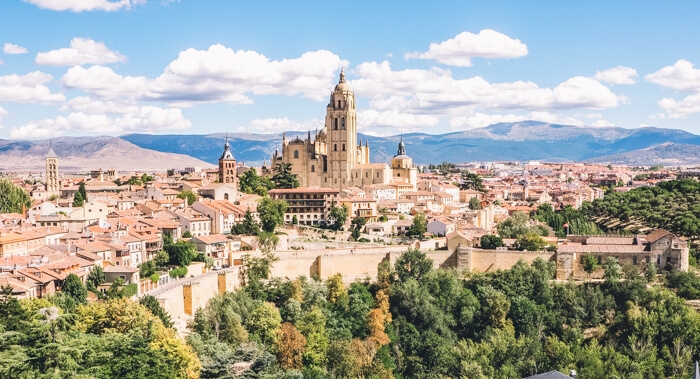
Castilla y León is Spain’s biggest province, set north of Madrid and bordering Portugal to the west. It is mostly a large plateau surrounded by mountains. The best-known cities in the region are Segovia, where you can visit the historical Roman aqueduct, Salamanca, one of the world’s oldest university cities, and Burgos, the regional capital.
Castilla y Leon is the birthplace of Spanish (hence the name Castillian) and is a great place to spend a few weeks if you want to do a Spanish course, or simply just get to grips with the language from speaking to locals over some tapas and a beer.
7. Catalonia

Catalonia, which is situated in northeast Spain and borders France and Andorra has rich culture and heritage, in addition to its own language, Catalan. It’s also where Spain’s second city is located – Barcelona.
The city is famous for Gaudi’s exquisite and unusual architecture, which can be seen in Park Güell, Casa Batllo, and the Sagrada Familia cathedral. Barcelona is one of the most popular tourist destinations in Europe. You can find my Barcelona itineraries here.
Outside of Barcelona, Girona is famed for its medieval architecture, whereas Tarragona boasts a Roman amphitheater. The Costa Brava is also found in Catalonia and is a popular destination with European tourists due to cheap flights, lots of family-friendly activities, and excellent beaches.
8. Extremadura
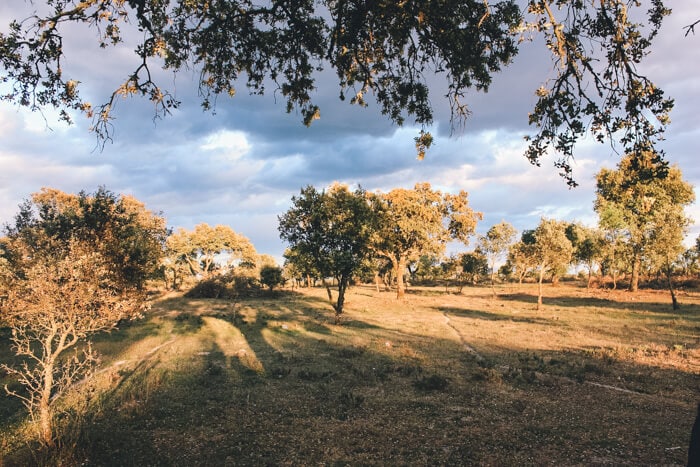
Extremadura is one of the lesser visited regions among tourists. The heart of old Spain is in the west, on the border with Portugal. The cities of Mérida, Trujillo, and Cáceres are considered some of the best-preserved historical cities in the country. The region is also home to some of Spain’s finest inland cuisine, with delicious stews, roasted meats, and strong and creamy cheese.
Settlements in Extremadura are few and far between, with the land dotted with hilltop castles and old, crumbling farmhouses. Nature lovers should head to Monfragüe National Park, which is one of the best places to visit in the country to view different species of bird life.
9. Galicia
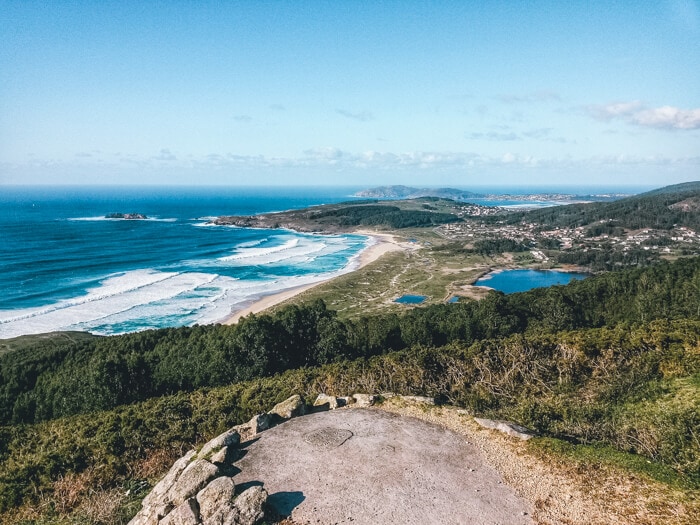
Spain’s most north-westerly region is also its wildest, famous for its green and rolling hills, excellent cuisine, and its Celtic-influenced culture. Many people who visit Galicia do so to complete the Camino de Santiago (the way of St James), a pilgrimage which ends at the cathedral in the beautiful old town of Santiago de Compostela. However, there’s a lot more to Galicia than just that.
The small city of Lugo is surrounded by the only complete Roman Wall in the world that’s still standing, A Coruña has an ancient Roman lighthouse, and Playa de las Catedrales near Ribadeo is a beautiful beach where you can walk among the limestone arches when the tide is out. The weather in Galicia has more in common with the UK and Ireland than the Costa del Sol and Ibiza, so don’t forget to pack waterproof clothing, whatever time of year you visit!
10. Islas Baleares (Balearic Islands)
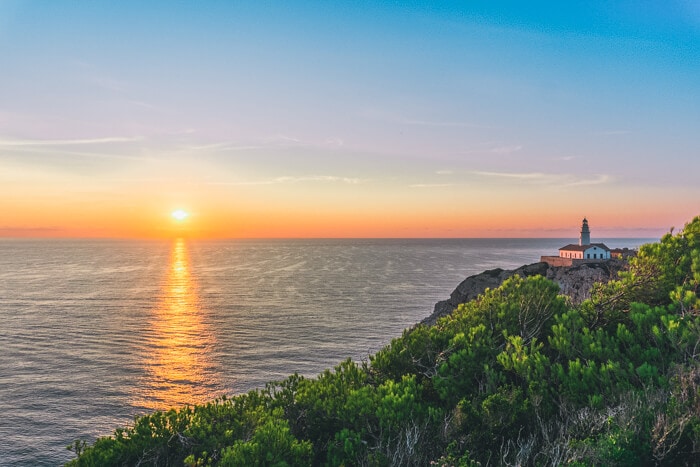
The Balearic Islands are situated in the Mediterranean Sea off the east coast of the Spanish mainland, the main islands are Mallorca, Menorca, and Ibiza, although there are smaller islands. Each island has its own distinct character and offers a different experience depending on your style of travel. Mallorca has a mix of everything, a family-friendly destination with lots of history, activities, and nightlife.
Ibiza is best-known for being a hedonist’s mecca, with mega clubs, all-night raves, and sets from the best DJs throughout the summer. Menorca is much quieter than its neighbors, with whitewashed villages in the center of the island, and white-sand beaches on its 216km long coastline.
11. Islas Canarias (Canary Islands)
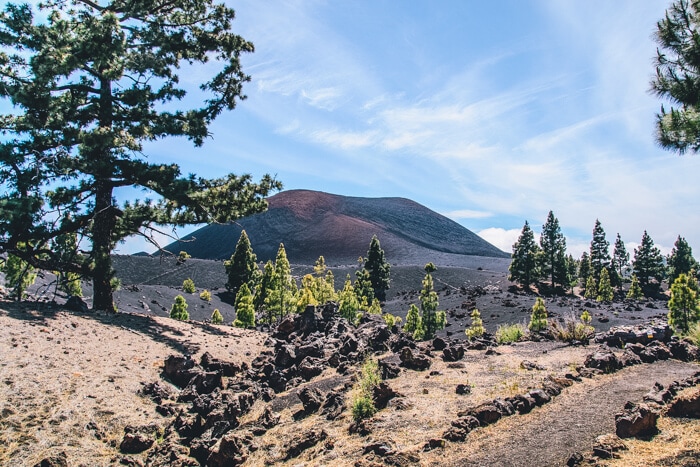
The Canary Islands are closer to Africa than Spain, and they consist of Gran Canaria, Tenerife, Lanzarote, and Fuerteventura among others. The islands are famous for their black and white sand volcanic beaches, and it’s here that you’ll find the highest mountain in Spain, Pico de Teide – the sometimes-snowy cap of the volcano reaching almost 4,000m.
Due to cheap flights and a pleasant climate year-round, the islands are a popular tourist destination and there’s plenty to do and see, as well as a range of accommodations to suit all budgets. A lack of light pollution means that it’s one of the best places in the EU to view the night sky, either with the naked eye or at one of the islands’ observatories.
12. La Rioja
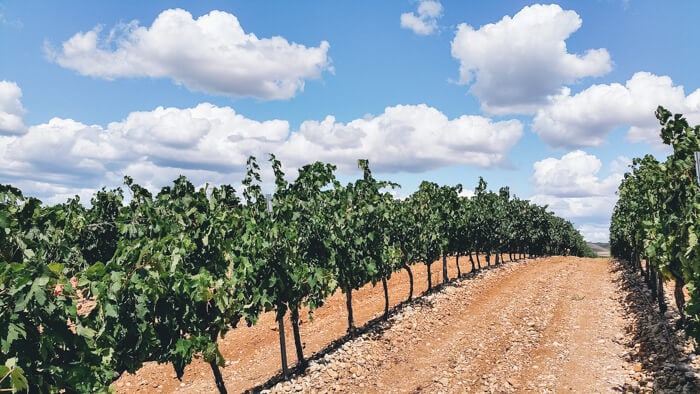
La Rioja is Spain’s smallest mainland region and is famed for its excellent wine. Vineyards dot the landscape south of the Cantabrian mountains, all through the Ebro valley. The town of Haro hosts a festival every summer called the Batalla de Vino (wine battle) which can get very messy! La Rioja boasts over 500 types of wines, renowned for their quality.
It’s not just about wine through – the regional capital Logroño is home to a cathedral complete with baroque towers, and arched stone bridge, and the Ebro park, through which Spain’s longest river flows. Outside of the city, there’s also hot-air ballooning, horse-riding, and 4 x 4 tours, through the Mediterranean forests and across the lunar mountain landscapes.
13. Madrid
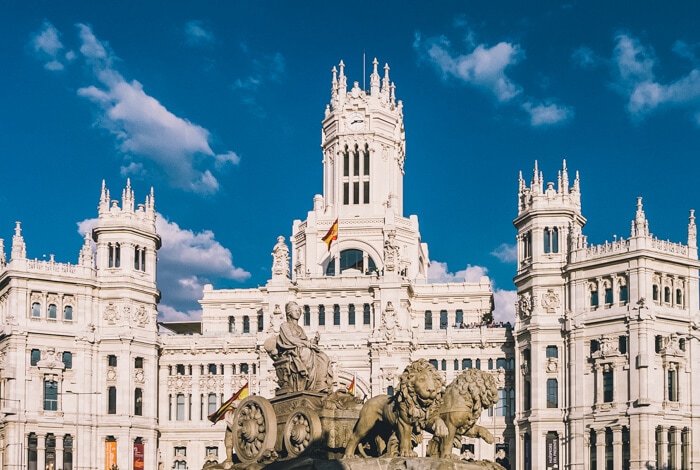
The capital of Spain is located right in the center of the country and is a vibrant and exciting city, home to a rich arts and culture scene, and a plethora of museums. For art lovers, the Museo del Prado is home to masterpieces from the great of Spain and further afield, while the Reina Sofia offers more contemporary art and where you’ll find Picasso’s epic Guernica.
It’s also known for its wide boulevards and leafy parks – rowing on the lake in the Parque del Buen Retiro is a great way to spend a lazy morning after indulging in the city’s lively nightlife scene or taking advantage of some of the country’s best restaurants. Outside of the city itself, take a trip northwest to the Monastery of El Escorial, the final resting place of many members of Spanish royalty.
14. Murcia
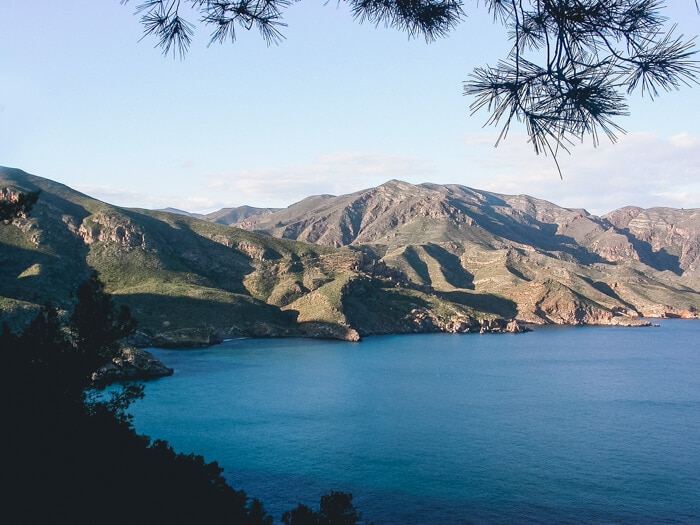
Murcia, in the southeast of the Iberian Peninsula, is a very popular region for tourists as it has more than 300 days of sunlight every year. The capital of the region is the city of Murcia, home to a beautiful Gothic/Baroque cathedral. However, most tourists flock to the Costa Cálida (the barmy coast), to spend their time on the shores of the Mar Menor and in the resort town of La Manga.
As well as sublime beaches, such resorts are dotted all along the course, some with a typical Spanish feeling, others – less so. There are parts of the region where it’s possible to spend 95% of your time interacting with English speakers.
Murcia is also famed for its golf courses. Although the region is semi-desert and doesn’t get a lot of rainfall, it has lots of lush fairways to practice your swing. Murcia is also home to a number of beauty resorts and spas.
15. Navarra
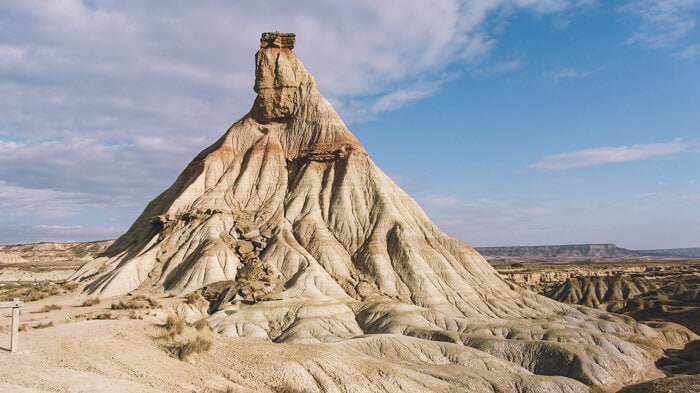
A small region in the north of the country, Navarra used to be part of the Basque country before it was annexed by Castile in the 16th century. The capital Pamplona has one of Spain’s most famous festivals, the Running of the Bulls, celebrated every July in honor of San Fermín.
Navarra is geographically diverse and is the region is one of the pioneers of rural tourism in Spain, with eco-friendly accommodations throughout the different landscapes. The Bardenas Reales are desert-like, the Pyrenees in the north are capped by snow, and green valleys, forests, and gorges are dotted throughout the region, meaning it’s perfect for nature lovers.
16. Pais Vasco (Basque Country)
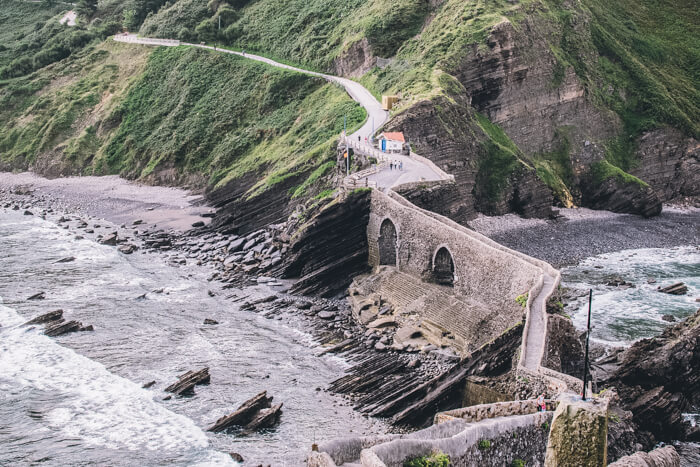
Sat on the Bay of Biscay in the north of Spain, the Basque country is not like anywhere else in Spain. The region is fiercely proud of its strong cultural heritage. You’re more likely to hear Basque here, which pre-dates Romance languages, than Spanish. This can be tricky as the two have very little in common.
San Sebastián is known for its excellent gastronomy, while the formerly drab port of Bilbao was revitalized in recent decades with the arrival of the Guggenheim Museum, and has since become a hub of architecture and design. Outside of the cities, you’ll find excellent surfing at Mundaka, the stairway to heaven at the religious site of San Juan de Gaztelugatxe, and traditional villages sat atop cliffs along the road from Bilbao to San Sebastián.
17. Valencia
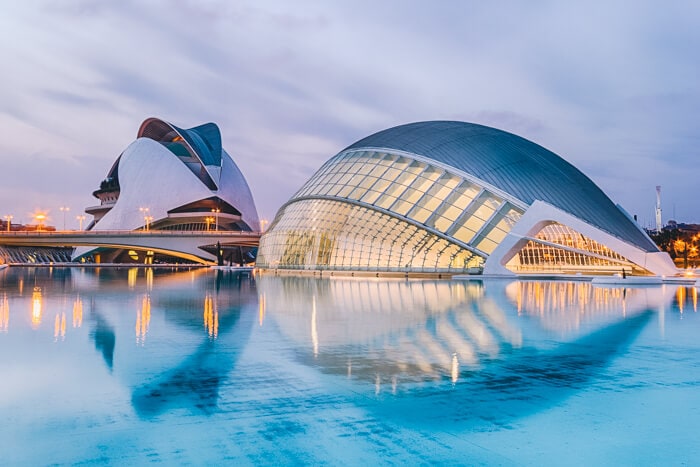
The region of Valencia is situated on the east coast of Spain, and the capital city of the same name is the 3rd largest city in the country. Valencia is known for the futuristic city of arts and sciences, which consists of an interactive museum, oceanarium, and planetarium. Less futuristic but no less spellbinding is the old town, which is home to excellent Valencian cuisine in small and traditional tapas bars. The city’s fallas festival every March is one of the best-known festivals throughout Spain.
To the south of Valencia, the towns of Benidorm and Alicante welcome a huge number of tourists every year, some staying permanently and becoming expats. To get away from cities, try visiting La Albufera nature park on the coast, or head inland to the Carrascar de la Font Roja or the Desert de les Palmes National Park.
18. Ceuta and Melilla
As well as the mainland regions and islands, Spain has two enclaves on the North Coast of Africa, Ceuta and Melilla.[……]
